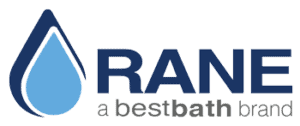Desquamation & Skin Care in the Elderly

There has long been a call for more focus on preventing and management of impaired skin integrity—especially in our elderly population, which is always increasing. With so many long-term facilities serving our aging citizens, this is the time to educate and implement more ways to promote healthy skin in facility residents. Better management of healthy skin can actually prevent wounds and disorders while improving the quality of life. Desquamation is the normal shedding or flaking off of the outer layers of skin as new skin cells take their place. It often shows up at a higher rate in the geriatric population. Rane Bathing and Accessibility wants to partner with healthcare facilities to improve all aspects of bathing, which includes skin care for residents in your facilities.
Causes of Excessive Desquamation & Skin Disorders in the Elderly
- With aging, skin is unable to produce and maintain the moisture it did at a younger age
- Skin becomes thinner as certain cells flatten due to lack of natural moisture
- Sitting in front of a heater or keeping the room very hot takes away moisture from skin
- Not enough water intake. The elderly often don’t drink as much water as needed
- Taking baths in hot temperatures or for prolonged times
- Using soaps or skin products with too high of an alkaline level
- Cold winter weather or very dry air
Educating Staff and Residents about Skin Care
- Proper Skin Care prevents skin wounds and disorders
- Increase water intake which improves overall health-not just skin
- Baths can hydrate different skin cells and plump them up
- Hot baths and showers should be switched to lukewarm water
- Use a soap substitute or a product with a pH level between 4-7 (often marked “for sensitive skin”)
- Limit baths to 30 minutes or less
- Blot lightly with towel as opposed to rubbing skin dry
- Apply the correct moisturizer while skin is still slightly damp from bathing (traps moisture from bathing inside the skin)
- Know the difference in moisturizers: Lotions– have the highest water content with no greasy residue, but evaporate more quickly needing more frequent application; Creams– have an oil in water base and have less occlusive base than oil; Ointments– consist of water-in-oil (typically lanolin or petrolatum) base and have the longest lasting effect on skin moisturizing than lotions or creams but leaves a greasy residue.
Rane Bathing and Accessibility, a pioneer in Walk-in Tubs, is highly-respected in the healthcare field for its innovative designs and solutions in accessible bathing for residential and facility use. They are dedicated to making baths safer, more accessible, more comfortable, and healthier. Contact Rane today.


